Description
Introducing the book “Metamorphosis” by Sadegh Hedayat
Kafka’s book The Transfiguration was first translated from French into Persian in 1329 by Sadegh Hedayat, an Iranian writer, translator, and intellectual who saw his life as Kafka.
Book of Metamorphosis
Loneliness is one of the greatest human pains. Pain that, if it penetrates a person’s being, leads him to emptiness. When a person loses the support of those around him and becomes alienated from others, he will gradually become alienated from himself. This alienation from separation from outer space is described in Kafka’s novel Metamorphosis as an Insect.
About Franz Kafka, one of the greats of twentieth century German literature
Franz Kafka was born in Prague in 1883 to a Jewish family. His father was a Jewish businessman who created a frightening atmosphere at home due to his authoritarian and violent behavior. Kafka’s father’s mistreatment was very influential in his upbringing, and throughout his life he could not remove the shadow of hatred from his life. Kafka was fluent in German, Czech and French, and studied chemistry for two weeks at Charles University in Prague before switching to law. The length of his law degree allowed Kafka to attend German literature and art classes.
At university, he met Max Broad and Felix Welch, two of Kafka’s closest friends for the rest of his life. Kafka received his doctorate in law from Charles Ferdinand University in 1906 and has since worked for several insurance companies. His promotions in the workplace showed that he was very busy, while his goal was to earn a living and pay for his living expenses.
He was so full of genius and perseverance that he was able to invent the first helmet, and he was awarded the Medal of Honor for his invention that reduced the casualties of workers. Kafka began writing private notes in 1910 that reflected his fears. His resentment of his family was evident in his works. Kafka then traveled to Berlin to focus more on writing. He suffered from depression throughout his life and suffered from various mental and physical problems. Finally, Kafka contracted tuberculosis and died in Vienna in 1924 and was buried in the Prague Jewish Cemetery.
Kafka’s works
During Kafka’s lifetime, his works were ignored, and he advised his friend Max Brod to burn all his works after his death. But Broud, against Kafka’s request, published works by him that were in his possession. Kafka’s most important works are the short stories of metamorphosis and the novels The Trial and The Palace. He wrote his works in German.
About the book Metamorphosis
In October 1915, The Metamorphosis was published in Leipzig. This book is the story of a family whose entire responsibilities in life are on the family’s son, Gregor. The story of “Samsa Knot” shows the thinking in which man is considered as long as he works, but as soon as he is weak and disabled, he removes the person’s system and the person is forgotten.
Forgetfulness is one of Kafka’s main concerns, which we see well in the story of metamorphosis. “If anyone considers Kafka’s metamorphosis to be more than an entomological fantasy, I congratulate him because he has joined the ranks of good and great readers,” Vladimir Nabokov said of the story. Writer, we read all the different angles of the story.
Metamorphic translation, from Sadegh Hedayat to Farzaneh Taheri
Farzaneh Taheri also translated Franz Kafka’s Metamorphosis into Persian, along with Vladimir Nabokov, a Russian-American writer, translator, and multilingual critic, on Farsi, published by Niloufar.
This translation, which is a newer translation than the Hedayat translation, is based on a new English version based on Kafka’s own transcripts and manuscripts. A metamorphic translation of “Ali Asghar Haddad” has also been published. This translator translates German stories. Haddad translated “Metamorphosis and Other Stories” from German, which includes the story of the metamorphosis and four other stories from the Caucasus, into Persian, and published it in the pocket edition of “Mahi”.
About the translator of the book Metamorphosis, Sadegh Hedayat:
Sadegh Hedayat was born in February 2012 in Tehran. He spent his high school years first at the Academy of Arts and later at the French School. At the same time, he published his first article in a weekly newspaper. Hedayat became a vegetarian during this period and published two books, “Man and Animal” and “Benefits of Vegetarianism”. In 1305, he went to Belgium, where he began his studies in pure mathematics, but soon after, due to dissatisfaction with the conditions of study in Belgium, he went to Paris.
In 1307, he had an unsuccessful suicide, which is said to be due to emotional issues, and at that time he wrote the plays “Parvin Dokhtar Sasan”, “Zande Be Gore” and the short story “Madeleine”. He returned to Tehran in 1309 and after that Hedayat began to write his books seriously and many research and fiction works were published by him.
At that time, Sadegh Hedayat became one of the first banned writers in the history of Iranian censorship for his work “Mustabab and Ghoogh Sahab” in collaboration with “Massoud Farzad”. In 1315, he traveled to India and published the book “The Blind Owl”. In 1316, he returned to Iran and wrote works such as “Stray Dog”, the long story of “Hajia Agha” and literary criticism articles and translations of works by “Kafka”. In 1329 he went to France and in April 1330 he committed suicide in his private house in Paris.

In a part of the book Metamorphosis, we read:
For the first fifteen days, the parents could not bring themselves to see him, and he was often praised for his sister’s perseverance; If in the past they were upset with her and considered her a useless girl. Now it often happened that the parents at the back of the nest room waited for their daughter to clean the room and, when leaving, carefully narrate what the room was like, what the nun had eaten, and what she had done this time; In addition, he was asked if he had recovered.
As soon as he entered the room, the door closed and the key turned twice. Its sound was so loud and sudden that it folded its legs. It was his sister who was in such a hurry; Because he had gotten up at the first moment to be ready, and at the right time he had jumped so fast towards the door that you could not even hear his footsteps. “Oh, finally …” he said to his parents as he turned the key in the lock. Guar Samsa looked around in the dark and asked, “Okay, now?” He soon realized that he could not be surprised;
Because he was more surprised that he had been able to move on such thin legs. In addition, it gave him a kind of relative comfort. He felt pain in his body; But it seemed that these pains had subsided and would eventually go away completely. He suffered almost no pain from the rotten apple that had sunk into his back, nor from the swelling around him, which was covered with soft dust. With sad compassion, he thought of his family again. He should have known he had gone, and if that were possible he would have been more firm in his opinion than his sister.
One morning, as soon as Samsa knot awoke from a disturbed sleep, he turned into a strange full-blown insect in his bed. When he raised his head, he noticed that he had a dome-shaped brown belly, which was divided by arc-shaped veins. The quilt, which was tightly tied above his abdomen, was about to fall off, and his legs, which were tenderly thin for his torso, twisted in front of his eyes.
1- Introducing the book on YouTube
2- Introducing the book in Aparat


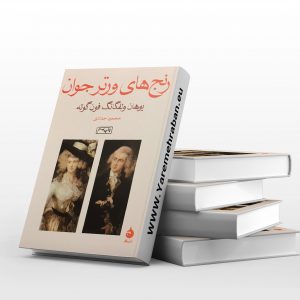




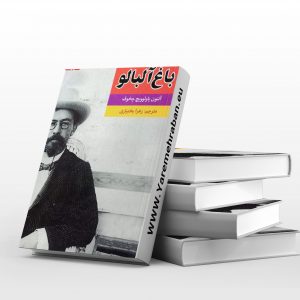

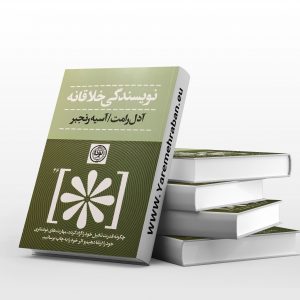
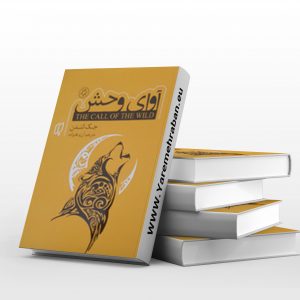
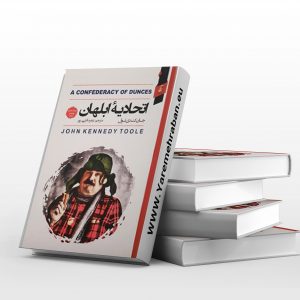

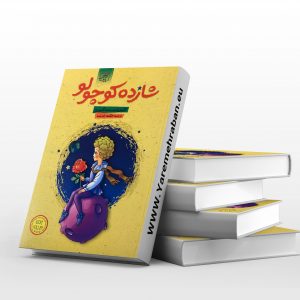
Reviews
There are no reviews yet.